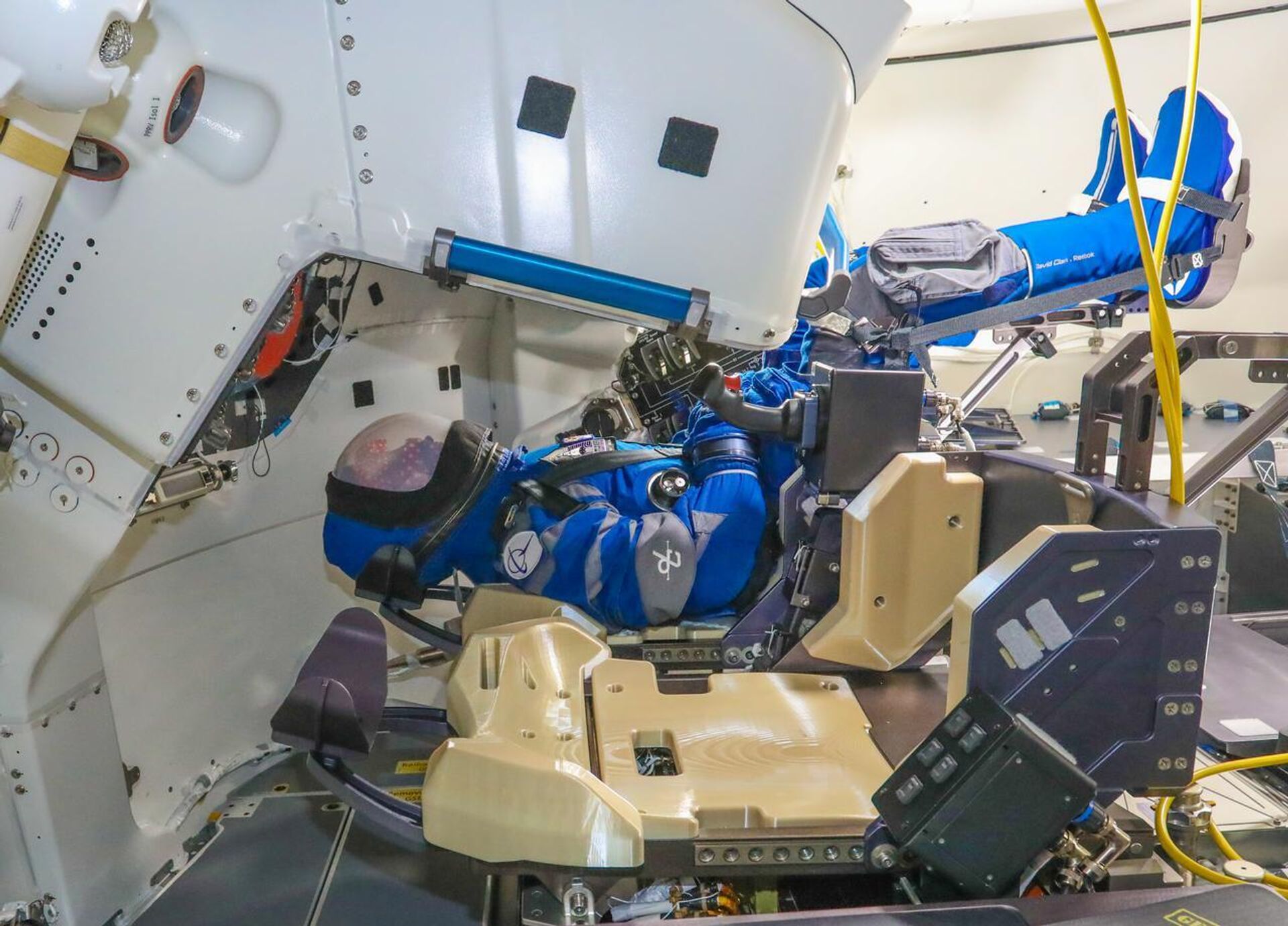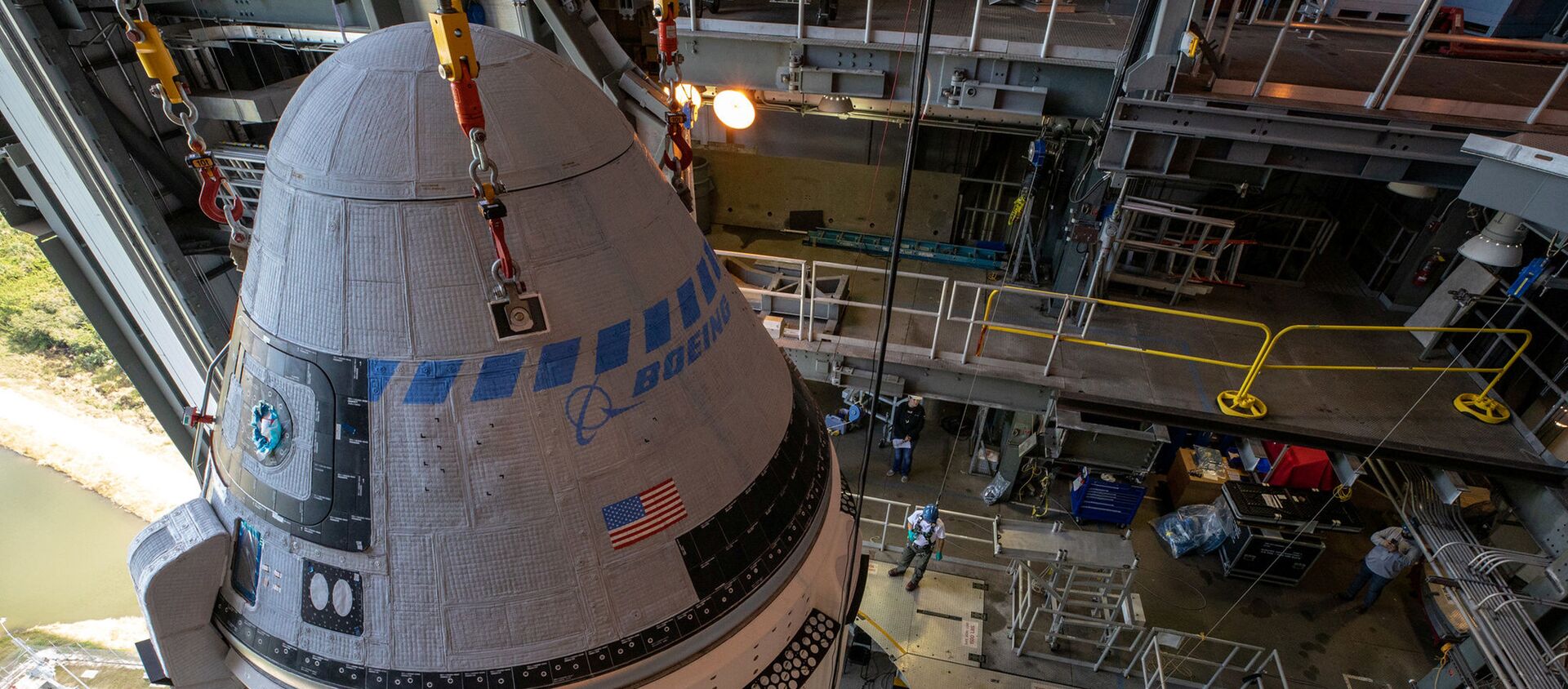Boeing's Starliner Successfully Docks With ISS for First Time
00:34 GMT 21.05.2022 (Updated: 20:53 GMT 19.10.2022)

CC0 / /
Subscribe
The unmanned astronaut capsule docked at the International Space Station (ISS) for the first time on Friday, 26 hours and 34 minutes after separating from a United Launch Alliance Atlas V rocket and advancing an unscrewed mission dubbed Orbital Flight Test 2 (OFT-2).
Boeing's second shot at docking its crew capsule proved to be a success as the unscrewed spacecraft successfully docked with the ISS at 8:28 p.m. ET (00:28 UTC) on Friday, per NASA.
"The Boeing Starliner spacecraft completes its historic first docking to the International Space Station," the NASA announcer said during the live feed.
The partially reusable spacecraft is designed to transport crew members to the ISS and other low-Earth orbit destinations. Boeing has been NASA's primary contractor for the ISS since the early 90s.
👋 Hello, #Starliner! @BoeingSpace's human-rated spacecraft has arrived at the International @Space_Station for the first time, docking at 8:28pm ET (00:28 UTC). pic.twitter.com/gXceiHJhuB
— NASA (@NASA) May 21, 2022
Rosie the Rocketeer, Boeing's anthropometric test device, was equipped with 15 sensors to collect data and serve as a simulation of what astronauts could expect on the journey.

Rosie the Rocketeer, Boeing’s anthropometric test device, claimed her spot once again in the commander’s seat inside the company’s CST-100 Starliner spacecraft for its second uncrewed Orbital Flight Test (OFT-2) for NASA’s Commercial Crew Program. Rosie’s first flight, OFT, provided hundreds of data points about what astronauts will experience during flight. For OFT-2, she will help maintain Starliner’s center of gravity during ascent, docking, undocking and landing. OFT-2 is scheduled to lift off at 6:54 p.m. ET Thursday, May 19, from Space Launch Complex 41 at Cape Canaveral Space Force Station in Florida bound for the International Space Station. Photo credit: Boeing/John Proferes
© Boeing/John Proferes
The CST-100 Starliner will be accessed by ISS crew members as early as tomorrow morning, and remain docked for about four or five days total. The spacecraft is expected to use thrusters to force itself out of orbit and back down to Earth. The freefalling pod is said to be landing in one of four predetermined locations.
The thrusters used in the deorbit maneuver will be of the same set that partially malfunctioned during separation from the Atlas V rocket.
Boeing and NASA revealed on Thrusday that at two of the twelve rocket engines cut off early during the procedure. Despite its off-course start, the Starliner was able to achieve a stable orbit after its flight control system was enabled and rerouted to a different thruster.
Boeing insists the occurrence "does not pose a risk to the rest of the flight test," per The Verge. At the same time, it has since linked the early cutoffs to a drop in chamber pressure and also disclosed that it would be investigating the spacecraft's "thermal cooling loop."
OFT-2 comes as Boeing's second attempt at demonstrating that its new passenger spacecraft is a viable option to transport both humans and cargo to the ISS in the future.
OFT, the first mission, proved to be a dud in 2019 due to a software glitch that made the spacecraft veer off course for the ISS, prompting Boeing to collect the vehicle after it landed at White Sands Space Harbor on 22 December 2019.

